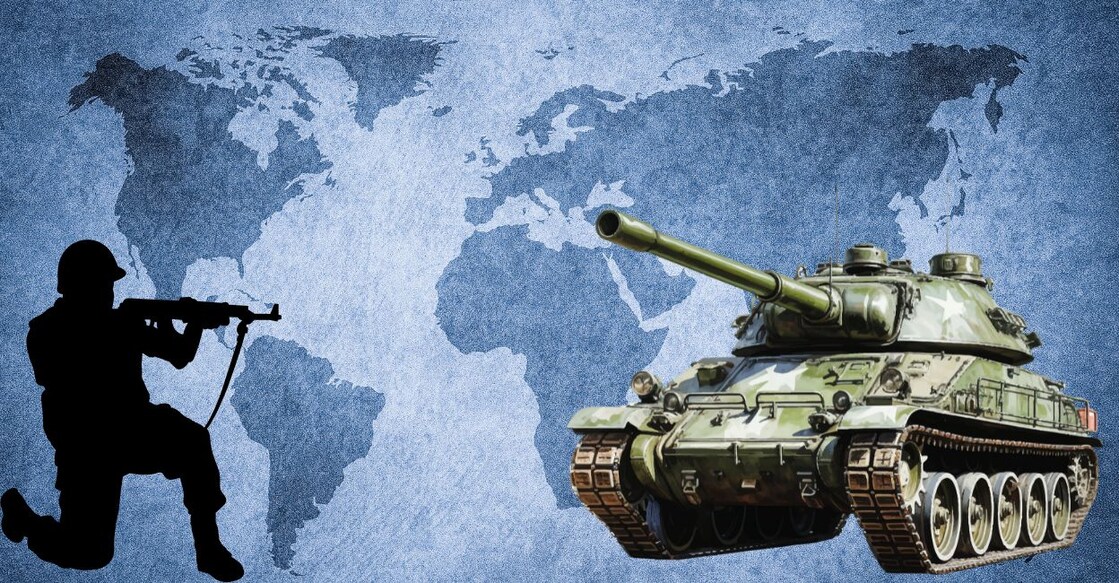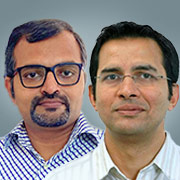How close are we to World War III?

Mail This Article
The worsening conflict in Ukraine and rising tensions between China and Taiwan – following closely on the heels of the crisis in the Middle East – have intensified global fears of a world war. News platforms and social media are now flooded with articles and videos signaling widespread apprehension about the possibility of an imminent World War III.
The Guardian recently published a thought-provoking article by diplomatic editor Patrick Wintour, titled ‘Are we heading for another world war – or has it already started?’ Written prior to the Israeli attacks on Iran, the piece argues that the rules-based international order is in decline, while violence continues to escalate – prompting nations to rethink their military strategies and realign global alliances.
A recent YouGov survey conducted across major European countries and the United States revealed that nearly half of Western respondents believe another world war is likely within the next five to 10 years. Media outlets have begun publishing maps of potential escape routes and ranking the world’s safest countries.
The question now looms larger than ever: are we witnessing the birth pangs of a new global conflict – or has World War III already begun?
Regional Conflicts and Alliances
A “world war” is often named only in retrospect – once the guns fall silent and the bombs stop dropping. World Wars I and II were labeled as such by historians only after the conflicts had ended. Contrary to common belief, both World Wars started as regional conflicts.
"Alliances are key to how conflicts become worldwide disasters. World wars don’t start as global wars; they begin as separate regional wars. A regional problem becomes a world war because of alliances," says political scientist Heni Ozi Cukier in a recent TEDx talk.
Two regional wars involving alliance formation are currently underway: Russia's war in Ukraine and the Iran-Israel conflict in the Middle East. A third flashpoint is emerging as China aggressively increases its military presence around US-backed Taiwan. Recent years have seen a marked strengthening of economic and military ties among Russia, China, and Iran, with nuclear-armed North Korea increasingly aligning itself with this axis.
The NATO alliance, though on the back foot following Donald Trump’s lack of commitment to the mutual defence guarantee, decided at the recently concluded Hague Summit to increase defence expenditure to 5 per cent of GDP.
Lack of restraint
A close look at how sophisticated weapons are used today compared to the Cold War era, when humanity first faced the risk of a third world war, gives ample reason for serious concern.
Even during the Cold War, ballistic missiles were deployed but never used – their mere existence and ability to deliver nuclear warheads served as a powerful deterrent. The Cuban Missile Crisis of 1962 is perhaps the most striking example of this principle.
Despite the development of intercontinental ballistic missiles and submarine-launched ballistic missiles fueling the arms race, the USA and USSR exercised remarkable restraint while sitting atop massive missile stockpiles. The threat of mutually assured destruction hanging over both sides prevented their use in any form.
However, recent regional conflicts have been marked by a lack of restraint, with warring parties often showing little hesitation in using extreme weaponry, though not nuclear.
The conflict between Israel and Iran has been marked by the extensive use of ballistic missiles since its onset. On October 1, 2024, the largest ballistic missile strike in recorded history occurred when Iran launched approximately 200 missiles at Israel in retaliation for the targeted killings of a Hamas leader and several high-ranking Iranian military officials.
Deliberate attacks on nuclear installations during military conflicts, showing no regard for the risk of nuclear radiation, have been uncommon in the nuclear age since 1945.
In addition to Israeli air strikes targeting Iran’s nuclear sites, the Middle East conflict saw the United States employ the GBU-57 Massive Ordnance Penetrator – a weapon never before used in combat. Often referred to as the “bunker buster” or the “mother of all bombs,” it was used to neutralise Iran’s Fordow and Natanz nuclear facilities.
During the early phase of the 2022 invasion of Ukraine, Russian missiles targeted the Zaporizhzhia Nuclear Power Plant, the largest of its kind in Europe.
Recent conflicts are also marked by killings or assassination attempts against key military or political figures – for instance, Israel’s targeted killings of Iran’s top military officers and nuclear scientists. It is worth remembering that the assassination of Archduke Franz Ferdinand in the Bosnian capital was a crucial event that triggered World War I.
The conflict between the South Asian nuclear powers has put the subcontinent on a short fuse, as India has shifted from its conventional ‘cold’ response to cross-border terrorism and begun carrying out retaliatory strikes against Pakistan.
The mother of all disruptions
The two World Wars in the 20th century killed millions of people, leaving many countries with serious population issues afterward. So it's no surprise that the idea of a world war usually brings to mind massive death and destruction.
That said, it is highly improbable that a third World War would annihilate substantial human populations. Past decades have witnessed the advancement of missiles and drones capable of precision strikes, even in remote locations. This means that warring nations can achieve their objectives without killing large numbers of innocent civilians.
Another key reason: In today’s global community, there’s a strong conviction that civilians shouldn’t be targets – and a huge stigma hangs over any nation that crosses that line.
If the death toll and infrastructure damage were limited, would that mean World War III wouldn’t be a big deal?
The answer is a big “no.”
World War I and World War II broke out at a time when the world was largely disconnected – global trade was limited, international travel was rare, and media reach was minimal. In today’s hyper-connected world, a world war wouldn’t stay confined to battlefields. Passenger and cargo movement would grind to a halt, disrupting life on a massive scale across every level of society.
When Iranian airspace, usually busy with passenger and cargo flights, was cleared for fighter jets and ballistic missiles, the global aviation industry went into utter crisis mode.
Just one symbolic Iranian attack on the U.S. Al Udeid Air Base in Qatar paralysed the Middle Eastern aviation hubs, leaving people stranded for many days. For many non-resident Keralites in Europe and North America, this year’s vacation trip to their homeland has become a long, grueling journey, redirected through different airports.
The profound irony is that the same humanity that cannot afford even a slight disruption in an interconnected world is preparing for a world war that could become the greatest disruptive event in human history.
(Social anthropologist and novelist Thomas Sajan and US-trained neurologist Titto Idicula, based in Norway, write on politics, culture, economy, and medicine)


